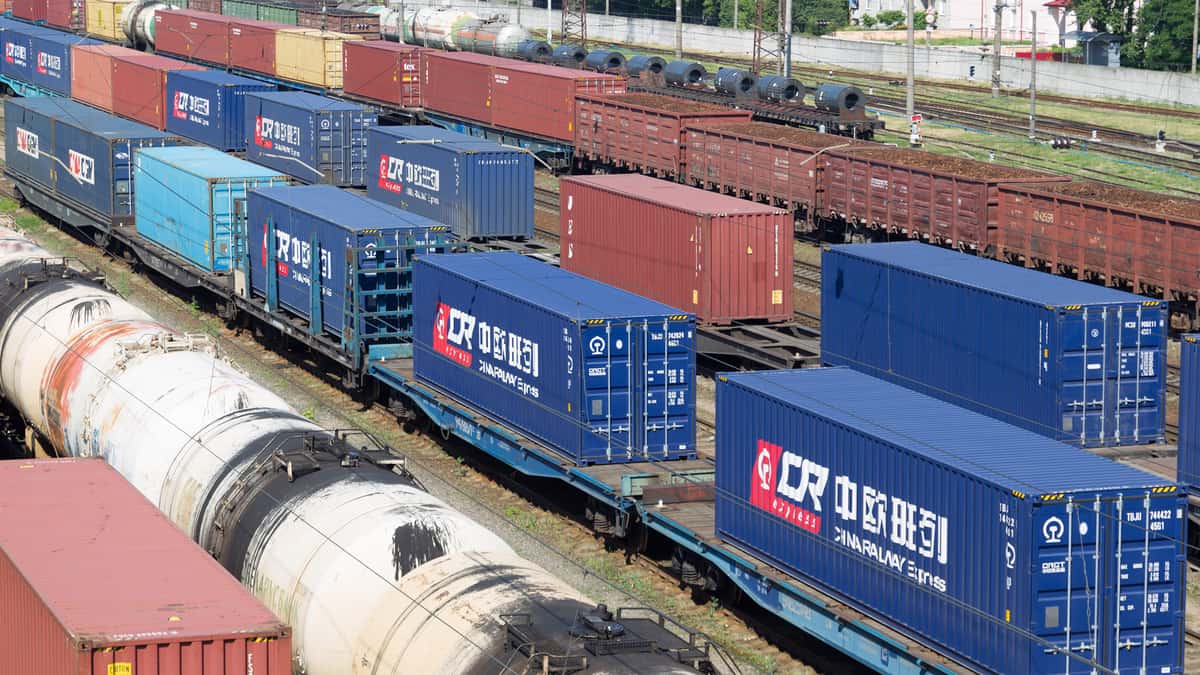The much popularized Chinese one belt one road (OBOR) strategy seems to have hiccups on its path, as evidenced from the statements made by the state-run China Railway admitting that several of the intermodal containers on trains connecting China to Europe run empty. Empty intermodal containers have been a perennial problem that Beijing has had to contend with on this trade route ever since services commenced a few years ago.
The OBOR is an initiative by China to synthesize economic integration across the globe. China aims to create a neo-age trade route that courses across several continents, but with Beijing remaining the defining authority on its overall functioning. Being the largest trade surplus economy in the world, China has excess cash flow that runs in the billions of dollars, which it now splurges predominantly across emerging economies to extend its geographic relevance far away from its shores.
However, the extent of the OBOR initiative might be too vast and complicated for it to make perfect sense, even for a country as ambitious as China. OBOR’s China-to-Europe railroad connection is an expensive gamble by Beijing, which believes the investment will pour out dividends in the long-term, as trade picks up in the regions the railway lines traverse.
But from the Chinese railway confirmation, it is evident that China might have overestimated the connection’s relevance in Europe and Central Asia. Nonetheless, China Railway insisted that the problem of empty intermodal containers had largely been eliminated in 2018, after new regulations restricted the number of empty containers to 10 percent per train.
This move looks to have had the desired effect over the year, with only 2 percent of intermodal containers heading to Europe went empty compared to 6 percent last year, and 18 percent of containers heading back to China were empty compared to 29 percent on the same route in 2018.
Then again, the prosperity of this railway connection might be untenable without the subsidies that the Chinese government and local provinces provide to exporters. Until 2018, there was a standard 50 percent subsidy for all shipments by rail between China and Europe, which was brought down to 40 percent this year. Beijing intends to keep chiselling at the allowances and finally phase it out by 2022.
But removing subsidies might be a death knell to the railway system, as it is stuck between a rock and a hard place, in the context of costs incurred and speed of transport. Even after spending billions on this trade route to the West, rail accounts for a meager 1.3 percent of trade between China and the European Union (EU) by volume and 2.6 percent by value.
These figures pale in comparison to the numbers put forth by aerial and maritime transport between the two economies. Maritime freight accounted for 90 percent of overall trade by volume and 60 percent by value, while air transport registered 2 percent by volume and 27 percent by value.
The problem with the railway system is that it has not convinced exporters on its apparent utility of being faster than maritime and cheaper than air transport. Most of the exports to the EU from China are manufactured in cities near the eastern coast of China; from that area it makes more sense to ship freight by sea rather than rail.
Even for cities like Hefei, which is situated roughly 300 miles from the coast, it takes about 18 days for freight to travel from the city to Hamburg, Germany; accounting for delays that could extend to around 20 days. Taking the sea route to Hamburg would take about 30 days, but at a cost that is nearly half that of rail. Exporters who are not in a hurry for their products to reach their destination find more sense in continuing to export via the sea and exporters who want expedited shipping ship through the air.
However, all might not be lost for the beleaguered intercontinental railway lines, as the upcoming International Maritime Organization’s low-sulfur fuel cap for maritime transport will stir up the cost-benefit analysis a bit. The IMO 2020 regulation will hit the maritime industry hard, as the bulk of the container lines that ply the oceans today are not accommodative of the low-sulfur fuel that will soon be the norm. Container lines will have to spend several millions of dollars on installing sulfur scrubbers at their exhaust or look to build new ships that are tailored for the regulation.
This is expected to hit on logistics costs, with exporters bracing to witness their transport expenses increase in time. In such a scenario, it might make financial sense for Chinese exporters, particularly in the far western part of China, to look at the railway lines to transport their goods to Europe.











